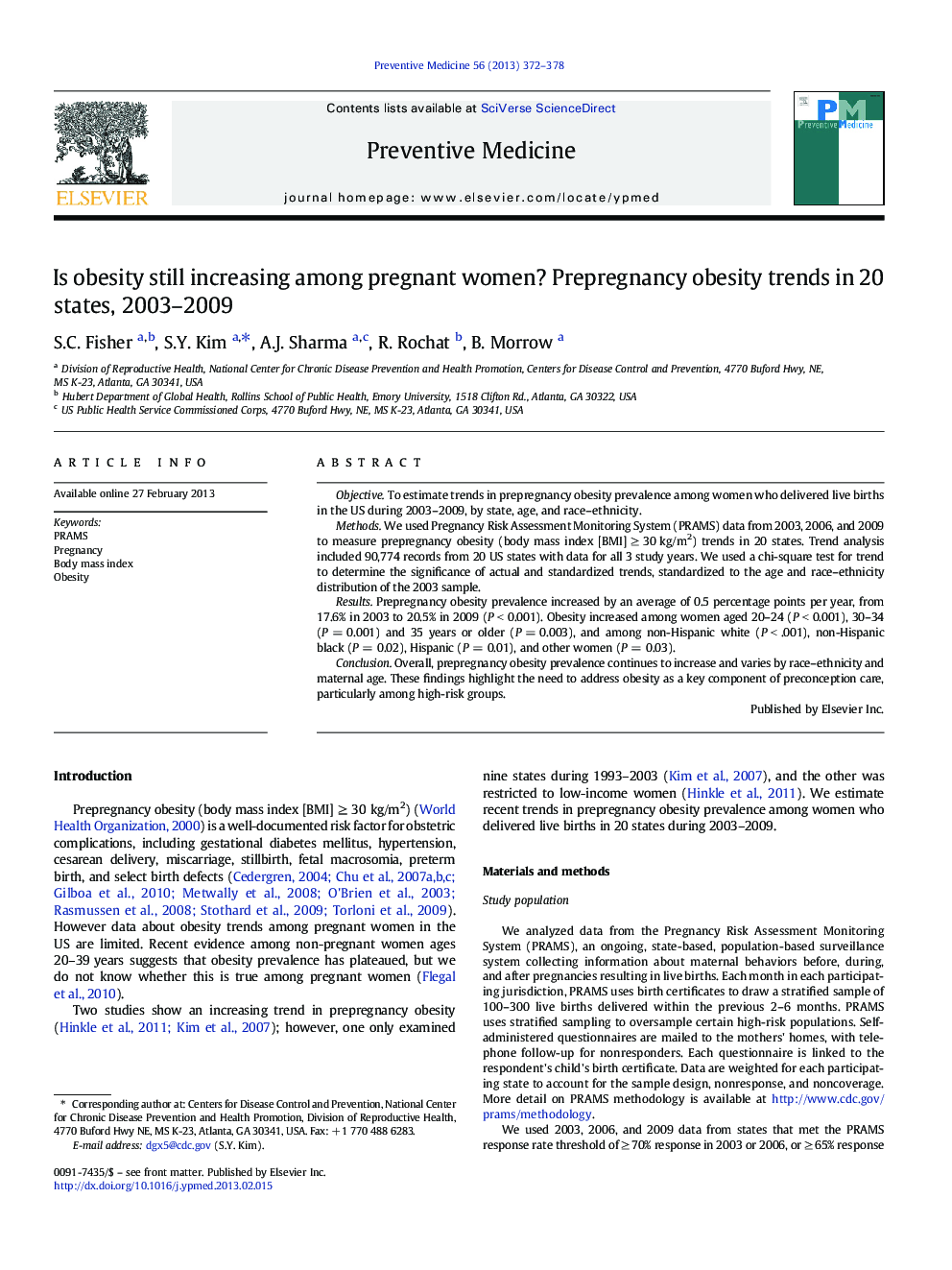| Article ID | Journal | Published Year | Pages | File Type |
|---|---|---|---|---|
| 3100601 | Preventive Medicine | 2013 | 7 Pages |
ObjectiveTo estimate trends in prepregnancy obesity prevalence among women who delivered live births in the US during 2003–2009, by state, age, and race–ethnicity.MethodsWe used Pregnancy Risk Assessment Monitoring System (PRAMS) data from 2003, 2006, and 2009 to measure prepregnancy obesity (body mass index [BMI] ≥ 30 kg/m2) trends in 20 states. Trend analysis included 90,774 records from 20 US states with data for all 3 study years. We used a chi-square test for trend to determine the significance of actual and standardized trends, standardized to the age and race–ethnicity distribution of the 2003 sample.ResultsPrepregnancy obesity prevalence increased by an average of 0.5 percentage points per year, from 17.6% in 2003 to 20.5% in 2009 (P < 0.001). Obesity increased among women aged 20–24 (P < 0.001), 30–34 (P = 0.001) and 35 years or older (P = 0.003), and among non-Hispanic white (P < .001), non-Hispanic black (P = 0.02), Hispanic (P = 0.01), and other women (P = 0.03).ConclusionOverall, prepregnancy obesity prevalence continues to increase and varies by race–ethnicity and maternal age. These findings highlight the need to address obesity as a key component of preconception care, particularly among high-risk groups.
► Prepregnancy obesity prevalence continued to increase overall in the US during 2003–2009. ► The rate of increase in prepregnancy obesity appears to be slowing over time. ► In 2009, more than one-fifth of women were obese upon entering pregnancy. ► Obesity should be addressed as a standard component of preconception care.
